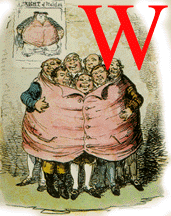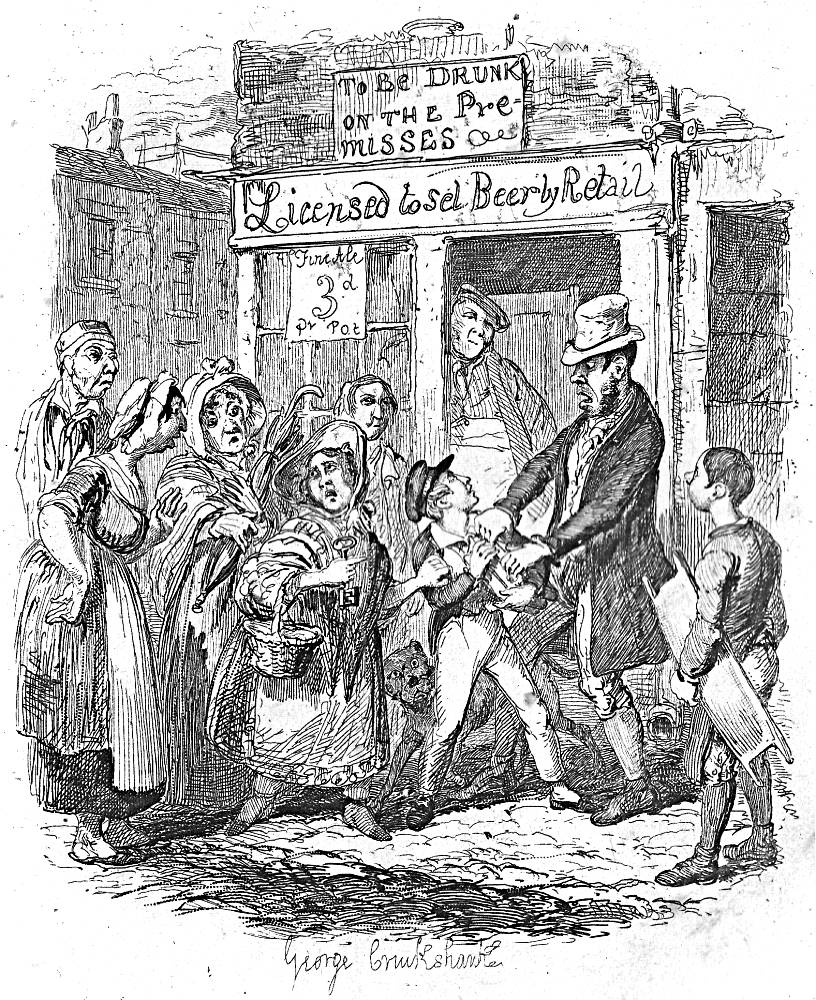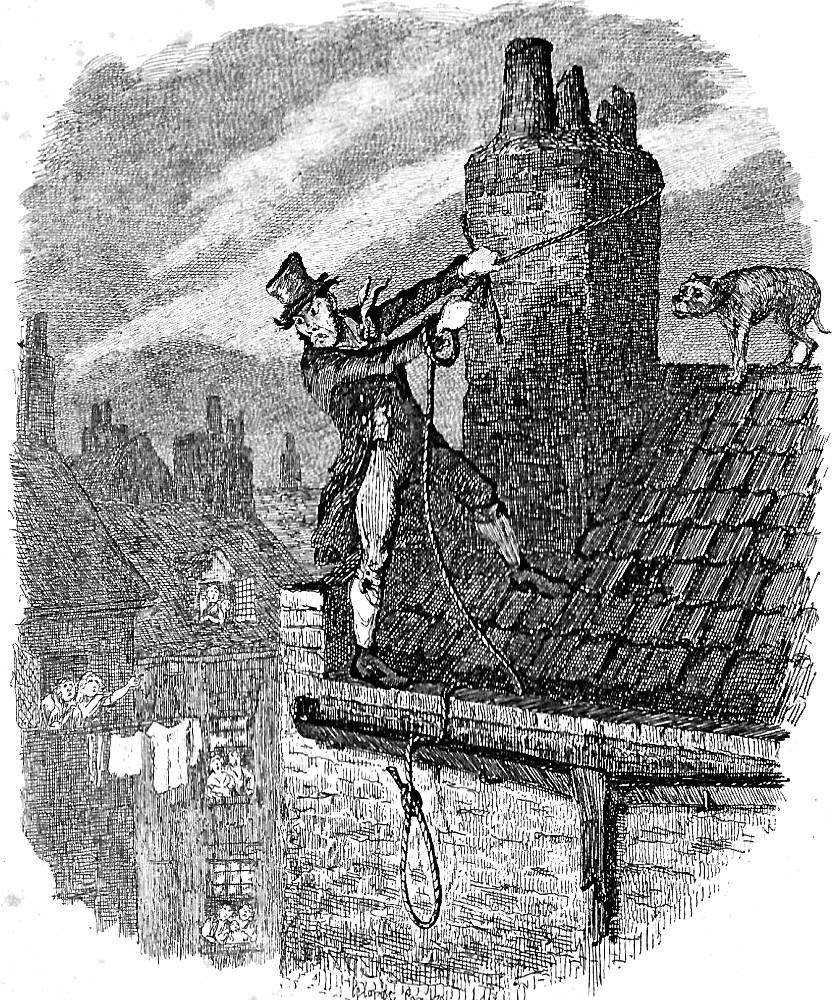How tremendously it had been laid upon young persons of our generation to feel Dickens, down to the soles of our shoes, no more modern instance that I might try to muster would give, I think, the least measure of; I can imagine no actual young person of my then age, and however like myself, so ineffably agitated, so mystically moved, in the presence of any exhibited idol of the mind who should be in that character at all conceivably "like" the author of Pickwick and of Copperfield. There has been since his extinction no corresponding case—as to the relation between benefactor and beneficiary, or debtor and creditor; no other debt in our time has been piled so high, for those carrying it, as the long, the purely "Victorian" pressure of that obligation. — Notes of a Son and Brother

hen Henry James tells us about “the Dickens imprint . . . in the soft clay of our generation” in A Small Boy and Others, the first volume of his autobiographical writing, he accurately captures the effect that the novelist had upon the imagination of readers in mid-Victorian England and the United States. In other words, Dickens existed for them as what James calls “the great actuality of the current imagination” (120), someone whose books could not be criticized or compared to the works of others because they existed as a cultural medium, as the atmosphere in which one read other books and imagined both fantastic and realistic lives. “Such at least was to be the force of the Dickens imprint, however applied, in the soft clay of our generation; it was to resist so serenely the wash of the waves of time. To be brought up thus against the author of it, or to speak at all of the dawn of one's early consciousness of it and of his presence and power, is to begin to tread ground at once sacred and boundless, the associations of which, looming large, warn us off even while they hold.” Dickens had become part of his readers and the way they saw the world: “He did too much for us surely ever to leave us free — free of judgment, free of reaction, even should we care to be, which heaven forbid: he laid his hand on us in a way to undermine as in no other case the power of detached appraisement” (117). In other words, “criticism, roundabout him, is somehow futile and tasteless. His own taste is easily impugned, but he entered so early into the blood and bone of our intelligence that it always remained better than the taste of overhauling him.” Yet another reason for the effect of Dickens lies in the fact that “we were practically contemporary, contemporary with the issues, the fluttering monthly numbers—that was the point; it made for us a good fortune, constituted for us in itself romance, on which nothing, to the end, succeeds in laying its hands” (188).
James first encountered Dickens it his very early childhood. A Small Boy and Others explains that the “whole question” of when he first encountered Dickens
dwells for me in a single small reminiscence, though there are others still: that of my having been sent to bed one evening, in Fourteenth Street, as a very small boy, at an hour when, in the library and under the lamp, one of the elder cousins . . . had begun to read aloud to my mother the new, which must have been the first, instalment of David Copperfield. I had feigned to withdraw, but had only retreated to cover close at hand, the friendly shade of some screen or drooping table-cloth, folded up behind which and glued to the carpet, I held my breath and listened. I listened long and drank deep while the wondrous picture grew, but the tense cord at last snapped under the strain of the Murdstones and I broke into the sobs of sympathy that disclosed my subterfuge. I was this time effectively banished, but the ply then taken was ineffaceable. [118-19]
Recalling that he was still too young to understand much of what Dickens had to give, James goes on to explain his childish maturing intellect and imagination became intertwined with his experience of Dickens novels. “I remember indeed just afterwards the sequel, in especial the vast extrusion of the Micawbers, beyond my actual capacity; which took a few years to grow adequate—years in which the general contagious consciousness, and our own household response not least, breathed heavily through Hard Times, Bleak House and Little Dorrit; the seeds of acquaintance with Chuzzlewit and Dombey and Son, these coming thickly on, I had found already sown. I was to feel that I had been born, born to a rich awareness, under the very meridian; there sprouted in those years no such other crop of ready references as the golden harvest of Copperfield” (119).
James, like other nineteenth-century readers and listeners, experienced the novels of Dickens in multiple forms, for he not only heard them read and read the books himself but he also encountered Dickens mediated in other ways. The pervading influence of Dickens, James tells us, came in large part from the many dramatic adaptations of his novels in which they encountered the novelist's characters and situations. “It was the age of the arrangements of Dickens for the stage, vamped-up promptly on every scene and which must have been the roughest theatrical tinkers' work, but at two or three of which we certainly assisted. I associate them with Mr. Brougham's temple of the art, yet am at the same time beset with the Captain Cuttle of Dombey and Son in the form of the big Burton, who never, I earnestly conceive, graced that shrine, so that I wander a trifle confusedly. Isn't it he whom I remember as a monstrous Micawber, the coarse parody of a charming creation, with the entire baldness of a huge Easter egg and collar-points like the sails of Mediterranean feluccas?” (113)
Yet another part of the experience of Dickens lay not in the text itself but in its illustrations. In fact, one the main requirements of successful dramatic adaptations of Dickens was what James calls the “dire. . . need to conform to the illustrations of Phiz” (113) and Cruikshank. His “remembrance of enjoying” Oliver Twist “is due mainly to the existence there of George Cruikshank's splendid form of the work . . . It perhaps even seemed to me more Cruikshank's than Dickens's; it was a thing of such vividly terrible images, and all marked with that peculiarity of Cruikshank that the offered flowers or goodnesses, the scenes and figures intended to comfort and cheer, present themselves under his hand as but more subtly sinister, or more suggestively queer, than the frank badnesses and horrors. The nice people and the happy moments, in the plates, frightened me almost as much as the low and the awkward” (119), though, as James explains, that fright did little to lessen the attraction of the novel.
The way Dickens and his characters thoroughly permeated James’s childhood experience of the world around him appears in his descriptions of people remembered from his earliest years terms of characters from the novels. That's why when describing his experience of the “the torture chamber of Dr. Parkhurst, our tremendously respectable dentist, who was so old and so empurpled and so polite, in his stock and dress-coat and dark and glossy wig, that he had been our mother's and our aunt's haunting fear in their youth as well” James tells that “he extremely resembles, to my mind's eye, certain figures in Phiz's illustrations to Dickens. . . .I was to encounter in Phiz's Dombey and Son that design for our tormentor's type” (64-65). James was not the only member of his family who saw people in terms of Dickensian characters. In Notes of a Son and Brother, the second of his autobiographical volumes, James quotes one letter from his older brother William describing “two old ladies [who were] perfect characters for Dickens” and in another letter he reports that “this Sweetser family is worthy of Dickens. It consists of a Mr. and Miss S., Mr. S.'s three gushing girls, a parrot and a maniac.” Similarly, in “the dusty golden light of retrospect” (203) Henry remembers Mr. Dolmidge, man who taught him penmanship, as a character from the novels:
Mr. Dolmidge, inordinately lean, clean-shaved, as was comparatively uncommon then, and in a swallow-tailed coat and I think a black satin stock, was surely perfect in his absolutely functional way, a pure pen-holder of a man, melancholy and mild, who taught the most complicated flourishes—great scrolls of them met our view in the form of surging seas and beaked and beady-eyed eagles, the eagle being so calligraphic a bird—while he might just have taught resignation. He . . . was to remain with me a picture of somebody in Dickens, one of the Phiz if not the Cruikshank pictures. [204]
If Dolmidge was a figure from Phiz, the London visited during his childhood is seen through the lens of Cruikshank.



Three of Cruikshank’s illustrations to Oliver Twist mentioned by James. Left: Oliver amazed at the Dodger's mode of going to work. Middle: Oliver claimed by his affectionate friends. Right: The Last Chance. [Click on images to enlarge them.]
During “a long, an interminable drive westward from the London Bridge railway-station” on “a soft June evening” James reports feeling terrified of “swarming crowds . . . of figures reminding me of George Cruikshank's Artful Dodger and his Bill Sikes and his Nancy, only with the bigger brutality of life, which pressed upon the cab, the early-Victorian fourwheeler, as we jogged over the Bridge, and cropped up in more and more gas-lit patches for all our course, culminating, somewhere far to the west, in the vivid picture, framed by the cab-window, of a woman reeling backward as a man felled her to the ground with a blow in the face. [309-10]
Note: Neither the Project Gutenberg online version nor the print edition I've consulted italicize the titles of Dickens’s novels, but I've added italics to confirm to the Victorian Web housestyle.]
Bibliography
James, Henry. A Small Boy and Others. New York: Charles Scribner’s Sons, 1913. Project Gutenberg online version produced by Chuck Greif, Martin Pettit, University of Toronto Libraries, and the Online Distributed Proofreading Team.
James, Henry. in Autobiography. Ed. F. W. Dupee/ New York: Criterion Books, 1956.
James, Henry. Notes of a Son and Brother. New York: Charles Scribner’s Sons, 1913. Project Gutenberg online version produced by Chuck Greif and the Online Distributed Proofreading Team.
Last modified 16 April 2020